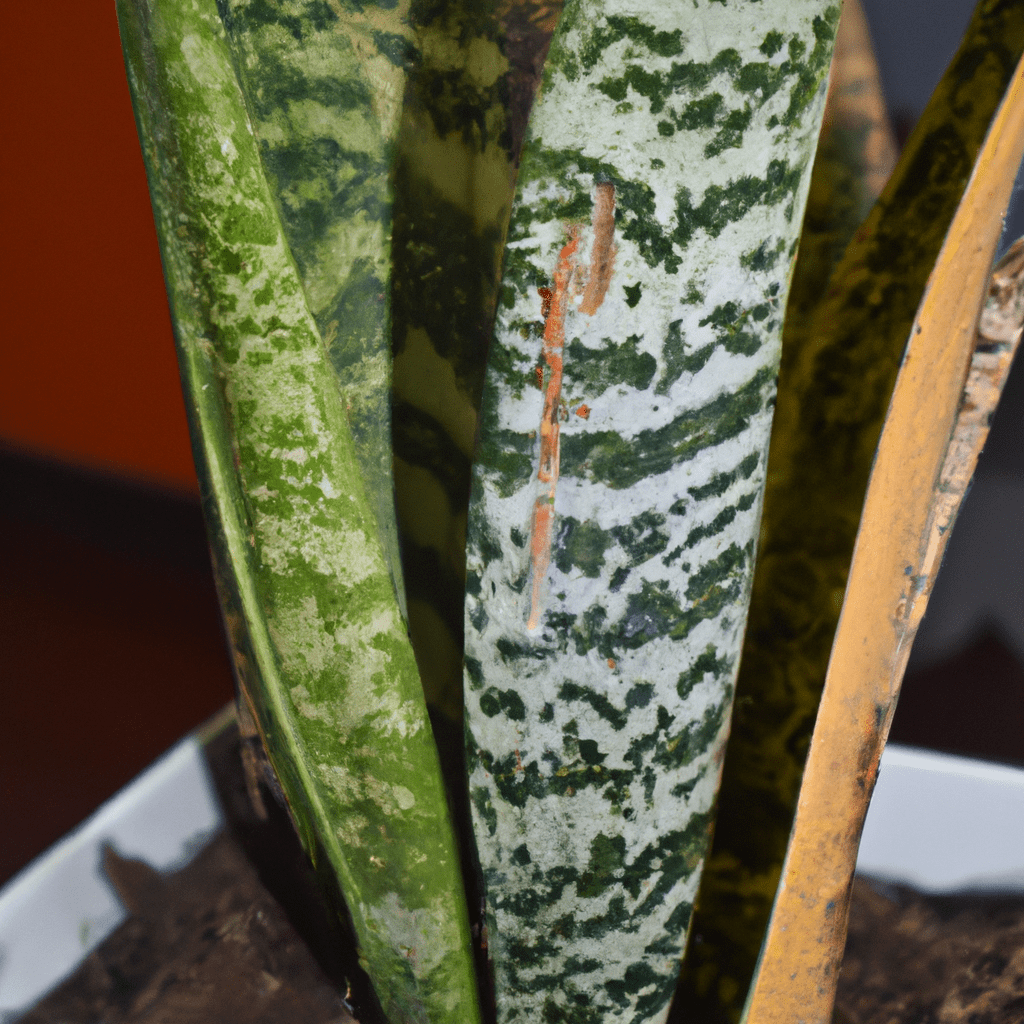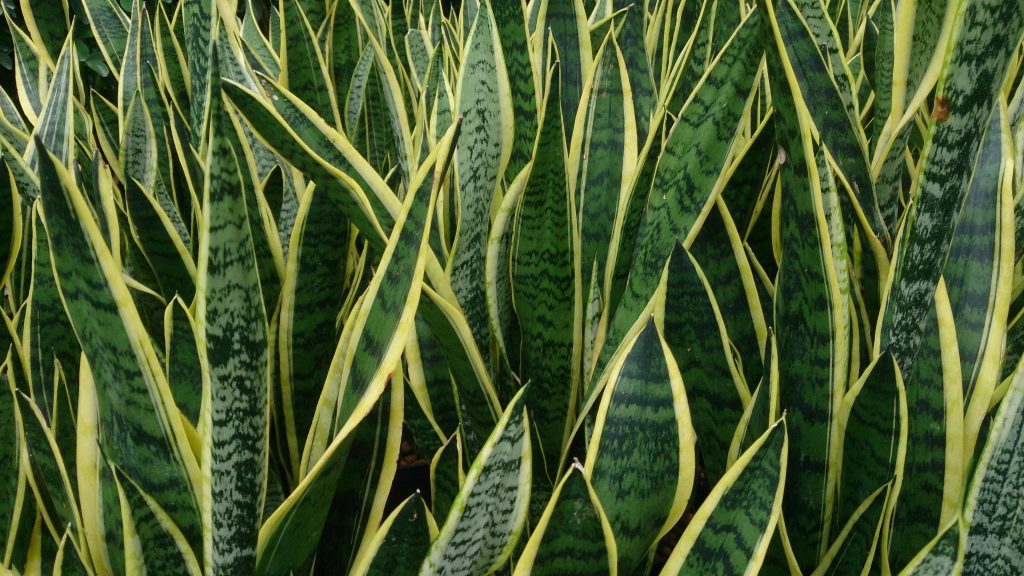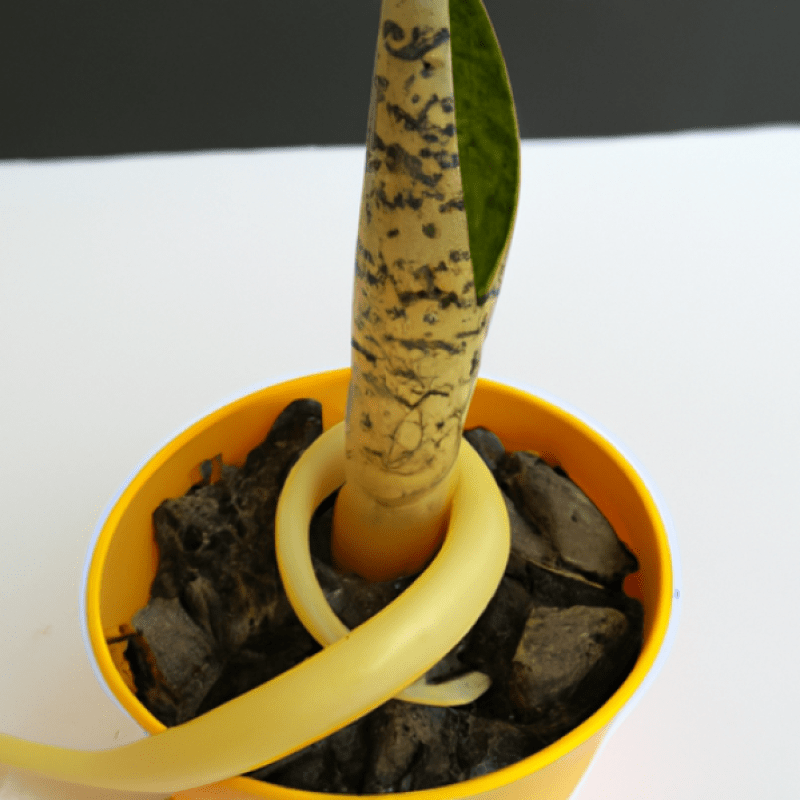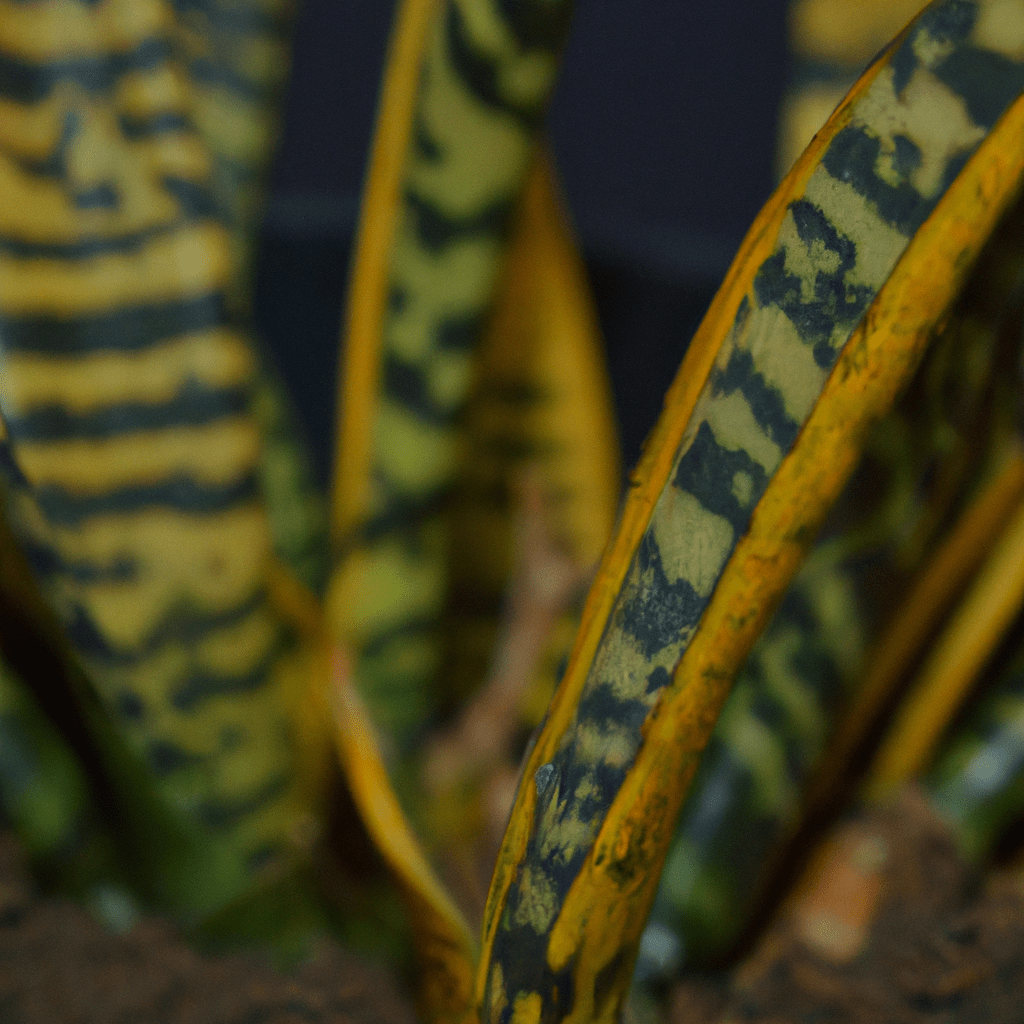Are you feeling like your Sansevieria Masoniana is just not living its best life? Don’t worry, we’ve all been there. Sometimes, our beloved plants just need a little extra TLC to thrive. In this article, we’ll take a closer look at some of the common problems that can plague this popular houseplant and give you the insider tips you need to get your Sansevieria Masoniana back on track. So sit back, grab a cup of tea, and let’s dive in!
1. How to identify common problems in Sansevieria Masoniana?
Sansevieria Masoniana, also known as whale fin or shark fin plant, is a popular houseplant due to its unique foliage. However, just like any other plant, it can suffer from various problems. Here are some common problems that you should be aware of:
- Root rot: Overwatering or poor drainage can lead to root rot, which is characterized by yellowing leaves, mushy roots, and a foul odor.
- Leaf spot: This fungal disease can cause brown or black spots on the leaves, which can eventually lead to leaf death. This can be caused by high humidity, poor air circulation, or overwatering.
- Pests: Sansevieria Masoniana is relatively resistant to pests, but it can still be affected by spider mites, mealybugs, or scale insects. Look for signs of webbing, sticky residue, or small bumps on the leaves.
By regularly inspecting your Sansevieria Masoniana and addressing any issues promptly, you can ensure that your plant remains healthy and thriving.
2. How to treat root rot in Sansevieria Masoniana?
To treat root rot in Sansevieria Masoniana, you need to take immediate action. Here are the steps you need to follow:
– Carefully remove the plant from the soil and check the roots. If they are mushy and brown, they are likely affected by root rot.
– Trim off the affected roots with a sharp, sterile knife. Make sure to remove all the damaged parts of the roots.
– Let the plant dry out for a few days in a warm, dry place with good air circulation. This will help the roots to heal and prevent further damage.
– Repot the plant in fresh, well-draining soil, and make sure not to overwater it. Allow the soil to dry out slightly between watering to prevent future root rot.
By following these steps, you can successfully treat root rot in Sansevieria Masoniana and help your plant to thrive again.
3. Why is my Sansevieria Masoniana not growing?
Possible answer:
Sansevieria Masoniana, also known as the Whale Fin or Shark’s Fin plant, is a slow-growing but hardy species of snake plant that can tolerate low light and irregular watering. However, if your Sansevieria Masoniana is not growing, several factors could be limiting its growth potential. Here are some possible reasons and solutions to consider:
– Lack of light: Sansevieria Masoniana prefers bright indirect light but can also survive in low light conditions. If your plant is not getting enough light, it may not produce new leaves or grow taller. Try moving it closer to a window or providing additional artificial light, such as a grow light or a lamp with a daylight bulb.
– Overwatering or underwatering: Sansevieria Masoniana is susceptible to root rot if it sits in waterlogged soil for too long, but it also needs enough moisture to stay healthy and active. If your plant’s soil is too wet or too dry, it may show signs of stress or stunted growth. Check the soil moisture level regularly and adjust your watering frequency and amount accordingly. Make sure the pot has drainage holes and that you’re using a well-draining potting mix.
– Lack of nutrients: Sansevieria Masoniana doesn’t require frequent fertilizing, but it can benefit from occasional feeding with a balanced houseplant fertilizer. If your plant has been in the same soil for a long time, it may have depleted most of its nutrients and need a boost. Follow the instructions on the fertilizer package and apply it during the growing season (spring and summer) every 2-3 months.
– Pests or diseases: Sansevieria Masoniana is generally resistant to most common houseplant pests and diseases, but it can still be affected by mealybugs, spider mites, or fungal infections if conditions are unfavorable. Check your plant regularly for any signs of infestation or damage, and treat them promptly with organic or chemical solutions if needed.
– Genetic or environmental factors: Sansevieria Masoniana may simply be a slow-growing plant, especially if it’s a young or small specimen. Also, some plants may have genetic variations or mutations that affect their growth patterns or leaf morphology. Finally, some environmental factors, such as temperature, humidity, air circulation, or soil pH, may also affect a plant’s growth. Try to replicate the plant’s native habitat as much as possible and observe any changes over time.
4. How to get rid of pests on Sansevieria Masoniana?
To effectively manage pests on Sansevieria Masoniana, it is crucial to take preventive measures such as maintaining proper hygiene, avoiding overcrowding, and ensuring adequate air circulation. In case of infestation, the use of organic methods such as neem oil, insecticidal soap, and garlic spray can be effective in controlling pests such as spider mites, mealybugs, and scale insects. Additionally, manual removal of pests can also be done by wiping the leaves with a damp cloth or using a soft-bristled brush to brush off the pests. Avoid using chemical pesticides as they can be harmful to the plant and the environment.
5. How much sunlight does Sansevieria Masoniana need?
The Sansevieria Masoniana, commonly known as the Whale Fin or Mason’s Congo, is a succulent plant that can tolerate low light conditions but thrives best in bright, indirect sunlight. It can also withstand direct sunlight, but too much exposure to the sun can damage its leaves and cause them to yellow or burn. As a general rule, it is recommended to place the plant in a location with filtered or bright, indirect sunlight. However, the amount of sunlight needed by the Sansevieria Masoniana may vary depending on factors such as humidity, temperature, and the intensity and duration of sunlight. It is important to monitor the plant and adjust its placement accordingly to ensure it receives the appropriate amount of sunlight for optimal growth and health.
6. Why are the leaves of my Sansevieria Masoniana turning yellow?
Possible answer:
The yellowing of Sansevieria Masoniana leaves can have various causes, including:
- Overwatering: If the soil is constantly wet or soggy, the roots may rot and the leaves may turn yellow and soft. To avoid this, allow the soil to dry out partially between waterings and make sure the pot has drainage holes.
- Underwatering: If the soil is too dry for too long, the leaves may also yellow and become dry and crispy. To prevent this, water the plant thoroughly when the top inch of soil is dry and consider misting it occasionally to increase humidity.
- Low light: If the plant is kept in a dim or shaded location, the leaves may lose their green color and turn pale or yellow. To remedy this, move the plant to a brighter spot, but avoid direct sun or hot drafts.
- Nutrient deficiency: If the plant does not receive enough essential minerals, such as nitrogen, potassium, or iron, the leaves may show yellowing or browning along the edges or tips. To address this, feed the plant with a balanced fertilizer once a month during the growing season and adjust the pH and composition of the soil as needed.
- Pests or diseases: If the above factors are ruled out, it is possible that the plant is suffering from a pest infestation or a fungal or bacterial infection. Check the leaves and roots for signs of bugs, mold, or rot and treat them accordingly with organic or chemical methods.
Identifying the specific cause of yellowing leaves in Sansevieria Masoniana may require some observation, experimentation, and research, but with proper care and attention, the plant can recover and thrive.
7. How to propagate Sansevieria Masoniana?
Sansevieria Masoniana can be propagated through division, rhizome cuttings or leaf cuttings. Division is the easiest method, as the plant grows in a clump and can be separated into smaller sections. Rhizome cuttings are taken from the underground stems, and require a bit more skill to successfully propagate. Leaf cuttings can also be taken, but it is important to ensure that the leaf has a portion of the stem attached, as this is where the new roots will grow from. Regardless of the method chosen, it is important to make sure that the cutting or division has a healthy root system and is planted in well-draining soil, with bright, indirect light.
8. How often should I water Sansevieria Masoniana?
Sansevieria Masoniana requires infrequent watering as it is a succulent plant that can tolerate drought-like conditions. It is important to allow the soil to dry out completely between waterings to prevent root rot. Watering once every 2-3 weeks during the growing season (spring and summer) and once a month during the dormant season (fall and winter) is sufficient. Overwatering can lead to yellowing of leaves and ultimately the death of the plant. It is also important to ensure proper drainage and not to let water sit in the bottom of the pot.
9. How to revive a dying Sansevieria Masoniana?
When attempting to revive a dying Sansevieria Masoniana, there are a few key steps to follow in order to maximize the chances of success. Firstly, it is important to identify the cause of the decline, which may include overwatering, underwatering, pests, or disease. Once the cause has been determined, the plant should be gently removed from its pot and any dead or damaged leaves should be carefully trimmed away. The roots should also be inspected for signs of rot or damage, and any affected areas should be removed. After repotting the plant in fresh, well-draining soil, it should be placed in indirect sunlight and watered sparingly until signs of new growth appear. Fertilizing the plant with a balanced formula may also be beneficial in promoting healthy growth.
10. Can Sansevieria Masoniana survive in low light conditions?
Sansevieria Masoniana, commonly known as the Whale Fin or Shark Fin plant, is a tropical plant that originates from West Africa. This plant is known for its large and unique leaves that resemble the shape of a whale or shark fin, making it a popular choice for plant enthusiasts. When it comes to light requirements, Sansevieria Masoniana can tolerate low light conditions, but it is not recommended to keep it in complete darkness. It is best to place the plant in a well-lit room, away from direct sunlight. In low light conditions, the plant may grow slower and produce smaller leaves, but it can still survive. However, the lack of light may also increase the risk of overwatering, which can lead to root rot. Therefore, it is important to monitor the soil moisture and adjust watering accordingly.
Well, folks, that’s all she wrote about Sansevieria Masoniana’s common problems! Hopefully, you now know how to keep your Snake Plant thriving and healthy. Just remember, water sparingly, give it the right amount of light, and avoid over-fertilizing. And if you do happen to encounter any issues along the way, don’t fret – we’ve got you covered! With a little bit of love and attention, your Sansevieria Masoniana will continue to be the envy of all your green-thumbed friends. Happy planting!



